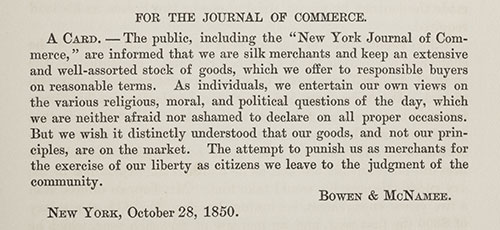ARCH
Assessment Resource Center for History
Traditional Multiple-Choice Items
Traditional multiple-choice items consist of a stem (typically a question or incomplete statement) and four possible responses, only one of which is correct. It is important to have criteria when developing traditional multiple-choice items in order to ensure consistency, validity, and reliability.
Assessing for Content Retention
Here is an example of a traditional multiple-choice item to assess how well the student can recall the content.
Which is true of the Three-Fifths Compromise? (stem, positively stated)
- It determined how much power the national government had over taxation. (distractor)
- It explained how slaves would be counted in a state’s population. (answer cue)
- It established a national government of three branches. (distractor)
- It settled the dispute over the Virginia Plan and the New Jersey Plan. (distractor)
This traditional multiple-choice question assesses students’ understanding about the basic premise of the Three-Fifths Compromise. Notice that the stem is positively stated and closed in that is represents a complete sentence. Also, the distractors have parallel structure, are about the same length, and are plausible options for an unprepared student.
Assessing for Historical Thinking and Understanding
These examples are traditional multiple-choice items that are designed to assess students’ understanding about learned concepts and historical thinking skills.
Sample 1
- Topic
- The Boston Massacre
- Grade Level
- Elementary/Middle
- Using the Item
- The question assesses students’ traditional and disciplinary reading skills, as well as their knowledge of context of events during this time period, in the process of sourcing a document.
- Background
- This is a legal deposition from Captain Thomas Preston. Preston commanded the British troops, who were accused of firing into the crowd during the event that became known as the Boston Massacre.
...a general attack was made on the men by a great number of heavy clubs and snowballs being thrown at them, by which all our lives were in imminent danger, some persons at the same time from behind calling out, damn your bloods—why don't you fire. Instantly three or four of the soldiers fired, one after another, and directly after three more in the same confusion and hurry....
Source: Deposition [legal statement/testimony] of British Captain Thomas Preston;
March 12, 1770
Why might a historian question this source about the Boston Massacre?
- It is a secondary source, created long after the event.
- It may not be reliable because Preston wants to prove his innocence. (answer cue)
- There are no other sources that exist to tell about this event.
- This is a private source, so it has not been checked for accuracy.
Explanation
This question assesses students’ ability to source a document. They must be able to read for understanding and determine the nature of the source, the author of the quote, and most importantly, the author’s perspective. They need to connect the statement to someone who may have a reason to lie or distort the truth in relation to the event.
Sample 2
- Topic
- Fugitive Slave Act
- Grade Level
- Middle/High
- Using the Item
- The question assesses sourcing and critical-reading skills, and the ability contextualize an event.
- Background
- Bowen and McNamee were silk manufacturers in New York City and members of a larger group of garment merchants. As a matter of conscience, they refused to sign a call to participate in a meeting to endorse the new Fugitive Slave Law and were vilified by other businesses. To assess their historical understanding, students must know about the inclusion of the Fugitive Slave Act in the Compromise of 1850, the provisions of the Fugitive Slave Act, and the relationship between northern garment manufacturers and Southern cotton producers.

Source: Bowen and McNamee. Advertisement from The New York Journal of Commerce. In The Lineage of the Bowens of Woodstock, Connecticut, by Edward Augustus Bowen, 155. Cambridge, Massachusetts: Riverside Press, 1897.
The authors of this text were most likely attempting to convey their views about which of the following?
- minority rights
- free market economy
- railroads
- slavery (answer cue)
Explanation
This multiple-choice question assesses students’ ability to read for understanding and to determine the nature of the source. The question assesses the skills of sourcing and critical reading, as well as context related to events during the time period. In this case, students would have to connect this source to the Fugitive Slave Act and the abolitionist movement.